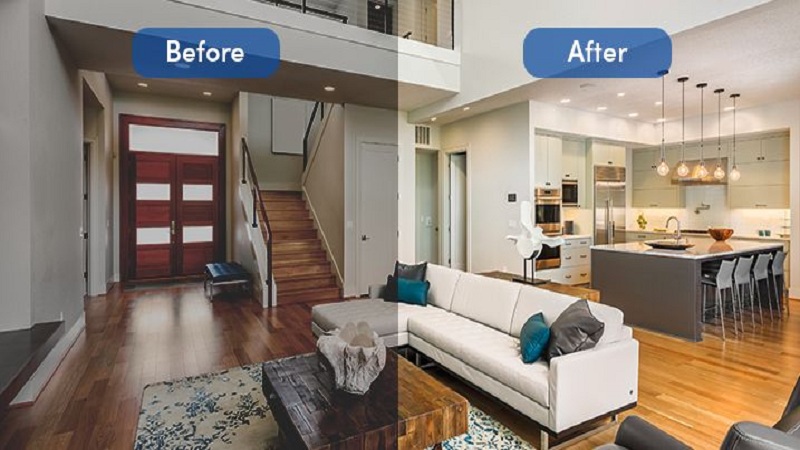In the competitive world of real estate, presenting properties in the best possible light is essential for attracting potential buyers. High-quality images play a vital role in this process, making Real estate photo editing a crucial step in marketing strategies. Effective photo editing can significantly enhance property listings, transforming ordinary photographs into visually appealing representations that can capture the attention of prospective buyers.
Understanding the Importance of Real Estate Photo Editing
One of the common challenges faced in real estate photography is poor lighting. Natural light may not always be available, or shooting conditions might not yield ideal results. Through careful adjustments in brightness, contrast, and saturation during the editing process, these issues can be rectified, resulting in an image that more accurately represents the property’s inviting atmosphere. Additionally, photo editing allows for the elimination of distracting backgrounds or objects that may detract from the main features of the property. By applying techniques such as cropping or blurring, real estate photographers can ensure that the focus remains on the key selling points.
Color imbalances often plague initial photographs as well, leading to images that fail to convey the true essence of a property. Editing software provides tools to enhance color accuracy, ensuring that the property’s features appear as they should. This not only improves the aesthetic appeal but also fosters trust with potential buyers who expect transparency in listings. Moreover, studies have shown that professionally edited images can significantly influence perceived property value. Listings with high-quality images receive more attention, potentially leading to quicker sales and higher offers.
Ultimately, investing in professional real estate Photo editing is an investment in the successful marketing of a property. High-quality images have the power to elevate a listing, drawing in more interested buyers and creating a positive impression of the property. The role of photo editing in real estate should not be underestimated, as it directly correlates with the effectiveness of property presentations and the overall sales outcome.

Essential Editing Techniques for Real Estate Photos
When it comes to real estate photography, the editing process plays a crucial role in producing images that effectively showcase a property. Various editing techniques are essential for capturing the true essence of a home, enabling potential buyers to visualize themselves in the space. One of the most fundamental techniques is color correction. It entails adjusting colors to ensure they appear true to life. A well-balanced color palette not only enhances the aesthetics of the photo but also prevents misleading representations.
Exposure adjustment is another critical technique. Properly managing exposure helps in retaining details in both shadows and highlights. It is important to avoid overly dark or excessively bright areas that can detract from the image’s quality. Cropping is equally essential, as it allows photographers to enhance composition by removing unnecessary elements from the frame and focusing on the property’s best features.
High Dynamic Range (HDR) imaging has gained popularity among real estate photographers due to its ability to capture details in both the interior and exterior of a property simultaneously. By merging multiple exposures, HDR imaging creates a balanced photograph that presents a comprehensive view without sacrificing detail.
Advanced editing techniques, such as sky replacement, further elevate real estate images. By swapping out a dull sky for a more dynamic one, images can capture the attention of potential buyers and create a more inviting atmosphere. Virtual staging has also become a valuable tool, allowing photographers to digitally furnish vacant spaces to give clients a better sense of the property’s potential. Lastly, balancing light sources is vital to maintain a natural look, ensuring artificial and natural lighting coexist harmoniously, enhancing the overall visual appeal.
By mastering these essential editing techniques, real estate photographers can produce captivating images that effectively entice prospective buyers while amplifying the features of the properties being showcased.
Choosing the Right Tools and Software for Photo Editing
When it comes to real estate photo editing, the selection of tools and software can greatly influence the quality of your final images. With a plethora of options available, both paid and free, identifying the right software tailored to your specific needs is crucial. Industry leaders such as Adobe Lightroom and Photoshop are often regarded as the gold standard for photo editing. Their extensive features allow for detailed adjustments, including exposure correction, color enhancement, and advanced retouching capabilities, making them popular choices among professionals.
For those who may be new to the field or have budget constraints, there are several user-friendly alternatives available. Software such as GIMP and Canva provides basic editing functionalities, suitable for someone just starting out. While these tools may not offer the full array of features found in premium products, they still deliver decent results for real estate photography. Another aspect to consider is whether you prefer desktop-based software or cloud-based options, as this can affect accessibility and collaboration with team members.
As you decide on the appropriate editing software, also bear in mind the importance of investing in high-quality presets and plugins. Presets can significantly shorten the editing process by applying predefined adjustments to your images, making them a valuable asset for real estate photographers who work under tight deadlines. Plugins, on the other hand, can expand the capabilities of your chosen software, offering unique filters and effects that can enhance your images further.
Ultimately, the best tool is one that aligns with your individual editing style, budget, and level of expertise. Allocating time to explore different options will empower you to make informed decisions and elevate your real estate photography to new heights.

